Why you can trust Creative Bloq
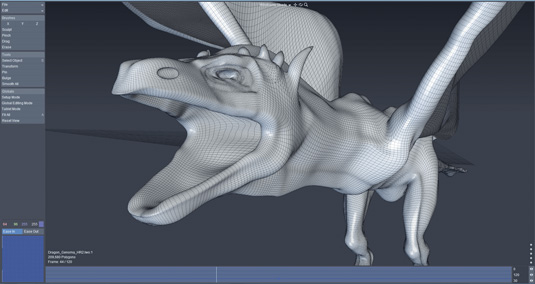
ChronoSculpt represents a fusion of several indispensable tools that I already use in my projects, but in ChronoSculpt the technologies are blended into one new application, with a timeline and simple interface that allows me to replace the time-consuming processes of correcting errors in animation and dynamic simulations with a new straightforward workflow.
It has an über-deformation and dynamics simulation editing environment that connects a sculpting brush interface to the benefits of a nonlinear timeline. Think about that for a minute: the ability to sculpt, over time, on objects and rigid-body and cloth simulations in a nonlinear timeline is a huge workflow improvement for both effects and animation workflows.
Geometry caching has always been a secret weapon here in Hollywood. Cached geometry is the typical way that larger studios like Walt Disney Animation work: they get their characters sent through the entire pipeline from department to department.
This process is to ensure that renders are exactly the same and remain consistent. Chronosculpt is based on the geometry cache workflow but it adds simple brush-based sculpting and editing tools to create a new way of working with dynamics simulations, morph targets (blend shapes) and cached animations.
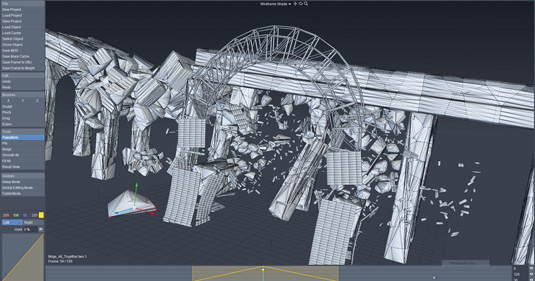
ChronoSculpt reads LightWave .LWO geometry files but also supports the .OBJ file format, for users of other applications such as Maya or Cinema 4D. It also reads major cache formats, including NewTek's proprietary LightWave .MDD cache format, which users of Autodesk Softimage will be familiar with, as well as supporting Autodesk Geometry Cache and Alembic formats.
The ability for all major software packages to work with ChronoSculpt without too much difficulty is a great bonus for anyone wanting to work on a project using a variety of software packages. This increased functionality will no doubt be a very welcome timesaver.
ChronoSculpt makes it easy to drag and drop your geometry file and then drag the cache files onto the object to manipulate the cache animation on the object. You can also use the brush deformation tools in ChronoSculpt on an object file that doesn't have a cache file, then save those deformations from the non-linear timeline as either a full cache animation or as a single frame endomorph for LightWave morph targets, or as a .OBJ object for Maya blend shapes.
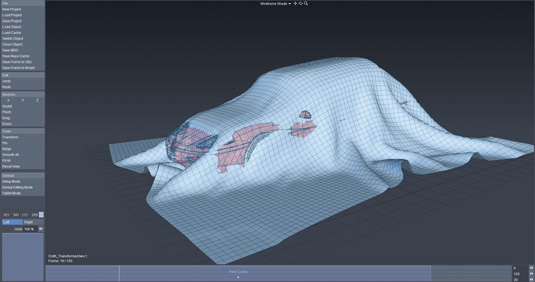
This enables you to create character facial blend shapes or morphs with ChronoSculpt, in addition to repurposing or correcting errors in any of your soft- or rigid-body dynamics simulations from your 3D software package.
This means you can do things such as taking a cloth simulation, quickly correct any penetration errors with a simple brush tool on the ChronoSculpt timeline, and resave the cache file for your main 3D application. You don't have to waste time endlessly tweaking the soft-body dynamics settings. If you have ever been under the gun on a shot that requires this type of effect, you will know what a huge timesaver the ChronoSculpt time sculpting workflow can be.
Transform and Pin tools
You can also correct rigid-body simulations by using the Transform or Pin tools to edit the individual rigid parts of your dynamics simulation. For example, one demo at SIGGRAPH this year showed a dynamics simulation of a bridge object that was being demolished into thousands of pieces.
Using the Transform tool in ChronoSculpt, individual pieces of the bridge chunks were reanimated to change the movement of their simulation without affecting any of the other pieces in the shattering object. That would normally be very difficult with traditional simulation tools but the ChronoSculpt workflow makes it an incredibly fast and easy process.
The Pin tool was also used on the same bridge object to show how a brush could be used to pin a particular section or pieces of the shattering bridge in place. The result is that the dynamics simulation looked completely different because it was only occurring on the sections of the bridge that were not pinned down.
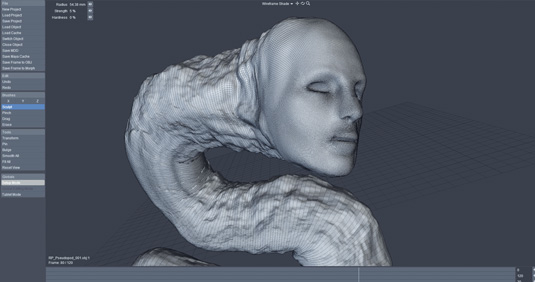
Another great feature of ChronoSculpt is that is able to handle large, complex geometry like that created with ZBrush; the brush sculpting and transform editing tools are still interactive on these very complex objects.
I've been using ChronoSculpt on a 12-million polygon object and haven't experienced any problems with this high level of geometry. This is really quite impressive given that I was testing it out on a machine at home that is several years old - with an average gaming graphics card on an earlier Windows operating system.
Overall, I've been very impressed with the power and ease of use of ChronoSculpt. Its price, simple intuitive interface, non-linear cache sculpting and editing features, geometry engine, and the fact that as a standalone it works with most other 3D software packages is very positive.
On the other hand this is version 1.0 of the product, and I would like to see a few features added to improve the workflow. Specifically I would like to see camera-matching so that sculpting and edits can be done from the same perspective as the main application.
Sound support for the timeline would help strengthen the facial morph workflow, and I would like to see tools for texturing and shading objects. Although 64-bit Windows is the only version currently available, according to NewTek Mac and Linux versions will be released in the near future.
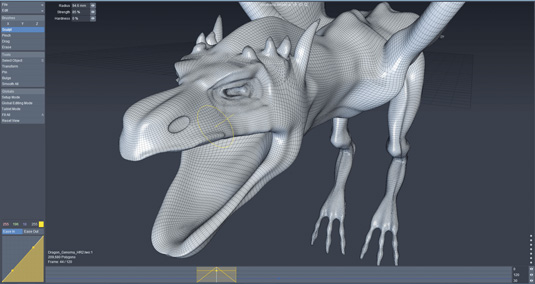
Timesaving features
If you're an artist working with dynamics simulations or geometry cache animation files, I recommend that you take a look at ChronoSculpt. It has already proven to be a huge timesaver at our company, especially in the area of editing dynamics simulations. I look forward to using its sculpting features to create interesting effects and morphs on future projects.
Verdict
Chronosculpt
Score: 8/10
ChronoSculpt is already proving to be indispensable in some areas, but with a few more features it would be perfect.
Uppers
- Non-linear timeline for cache animations
- Supports high poly count
- Simple intuitive interface
Downers
- No camera view matching
- No texturing tools
- No sound support for timeline
Scott Wheeler is a writer, director and effects supervisor, and the owner of Rogue State, a boutique post and FX studio in Burbank, California.
This article originally appeared in 3D World issue 175 - on sale now!

Thank you for reading 5 articles this month* Join now for unlimited access
Enjoy your first month for just £1 / $1 / €1
*Read 5 free articles per month without a subscription

Join now for unlimited access
Try first month for just £1 / $1 / €1

The Creative Bloq team is made up of a group of art and design enthusiasts, and has changed and evolved since Creative Bloq began back in 2012. The current website team consists of eight full-time members of staff: Editor Georgia Coggan, Deputy Editor Rosie Hilder, Ecommerce Editor Beren Neale, Senior News Editor Daniel Piper, Editor, Digital Art and 3D Ian Dean, Tech Reviews Editor Erlingur Einarsson, Ecommerce Writer Beth Nicholls and Staff Writer Natalie Fear, as well as a roster of freelancers from around the world. The ImagineFX magazine team also pitch in, ensuring that content from leading digital art publication ImagineFX is represented on Creative Bloq.
